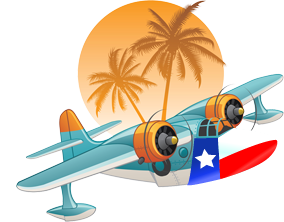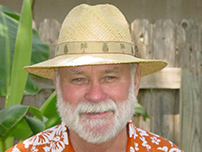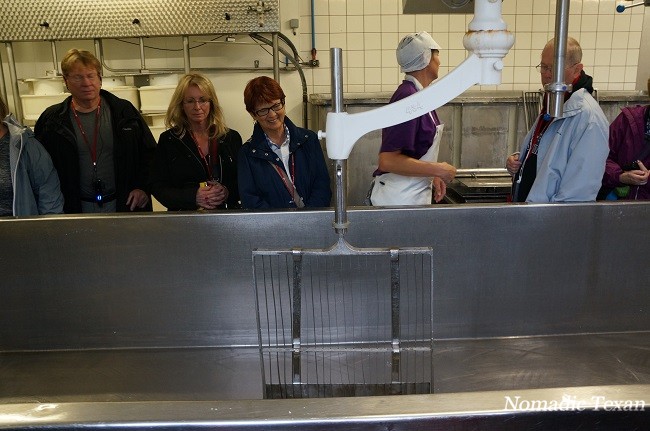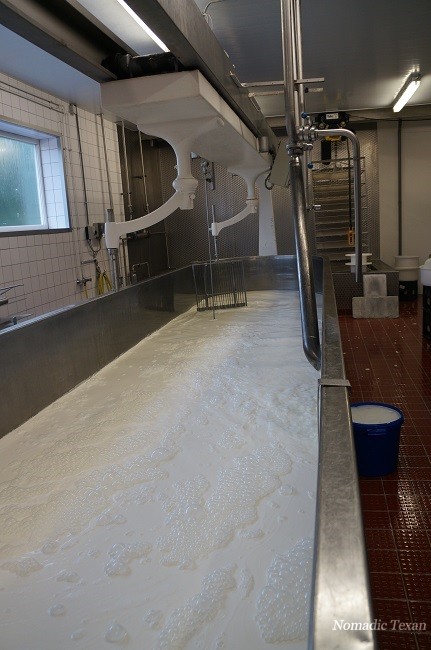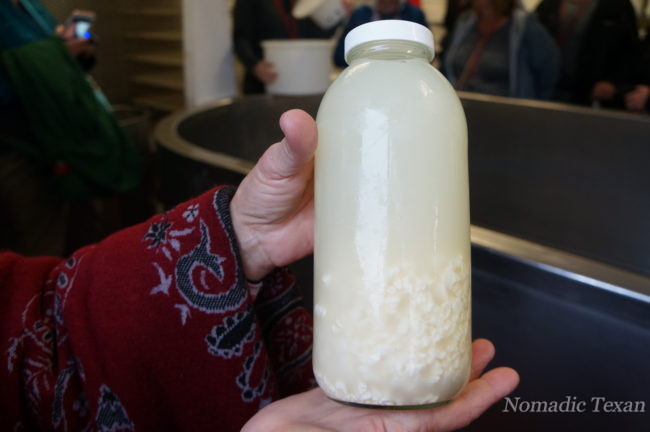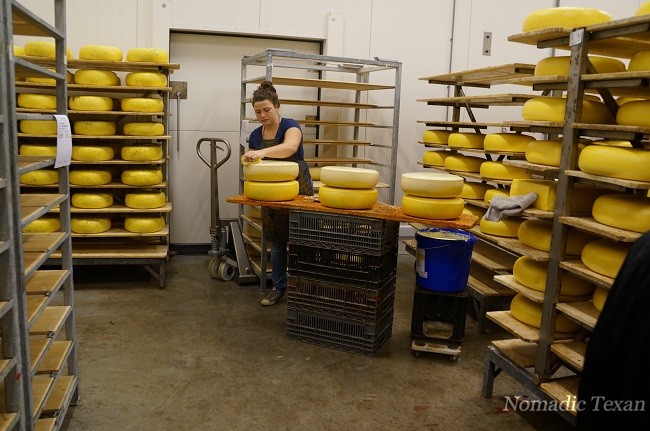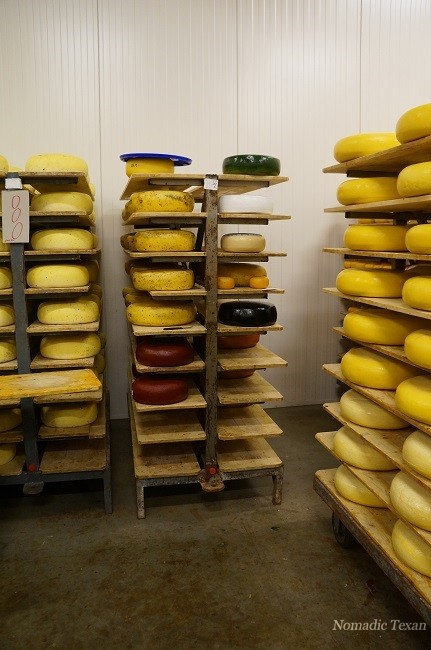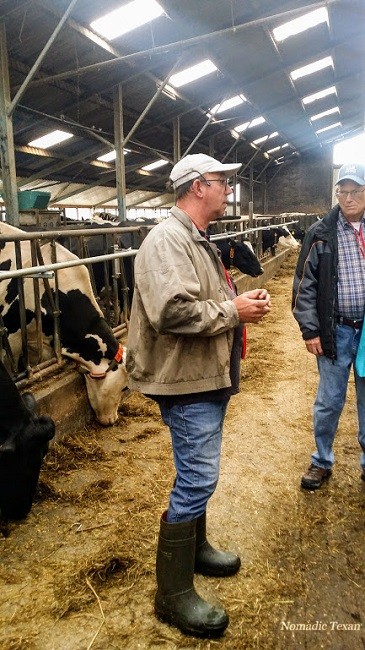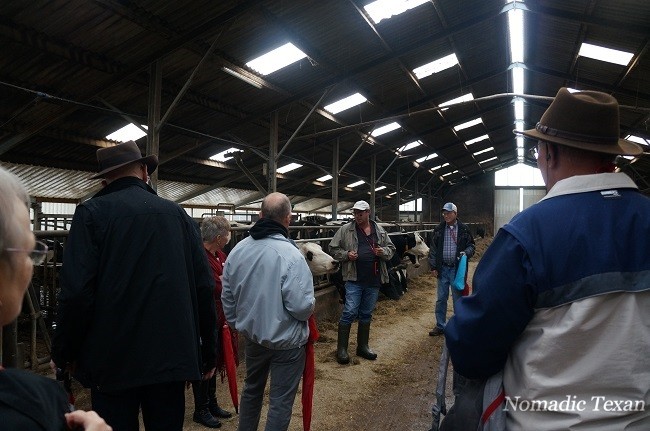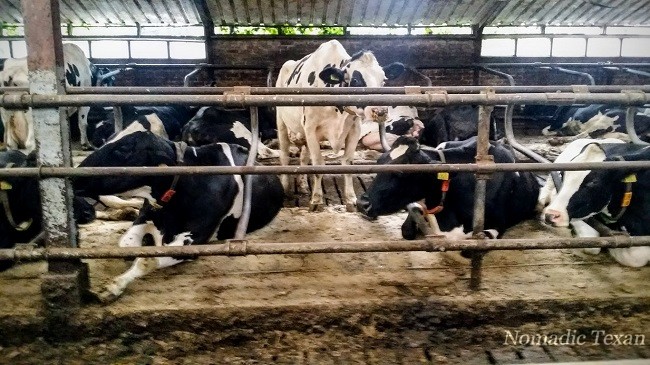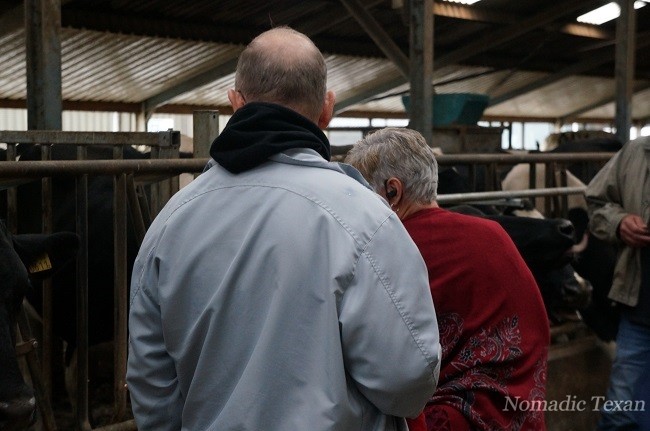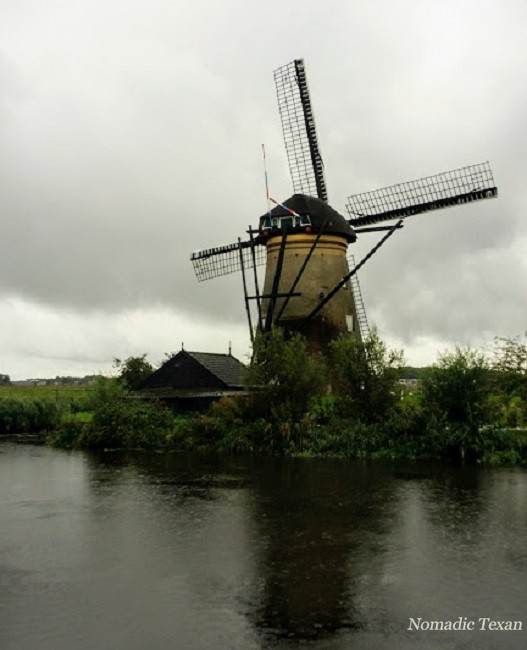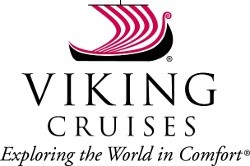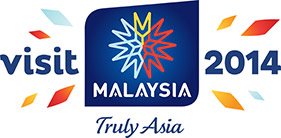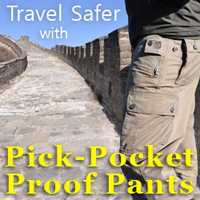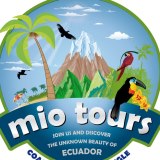Viking Cruises, Kinderdijk Windmills
I am fairly certain most of my followers understand my more than modest passion for history and my sincere love for UNESCO World Heritage Sites. One of the aspects that first drew my attention to Viking River Cruises was their ability to share these sites with their passengers on their river cruises. I am totally enthralled by all the historical locations available for one to visit, when taking a cruise with Viking.
The Rhine Getaway on the Viking Longship Eir was no different and on our first day we were able to visit the Kinderdijk Windmills and explore history dating back to 1738. The windmills were originally constructed and used as vehicles for draining the polders, which are a low-lying tract of land enclosed by dikes and in this case intended to keep the water from the junction of the Lek and Noord rivers from overrunning the dikes. The windmills are located 9 miles/15 Kilometers east of Rotterdam.

UNESCO Kinderdijk Windmill
After our Cheese making tour to the Holland dairy farm, we rode the bus through Kinderdijk and alongside the dikes. The story of the dikes is fascinating, as the dikes had been originally built nearly 300 years ago to keep water out of the farming land. To do this they had to configure a method to pump water out of the surrounding farmland, as it continued to flood after the advent of dikes. They discovered that an additional way to keep the polders dry was required.
Large canals, called “weteringen”, were dug to get rid of the excess water in the polders. However, the drained soil started setting, while the level of the river rose due to the river’s sand deposits. The land was basically peat (an accumulation of partially decayed vegetation or organic matter that is unique to natural areas called peatlands, bogs, mires, moors or muskegs.) Essentially they weren’t able to maintain it as farm land. They were then required to make the decision to switch all farms to dairy operations.
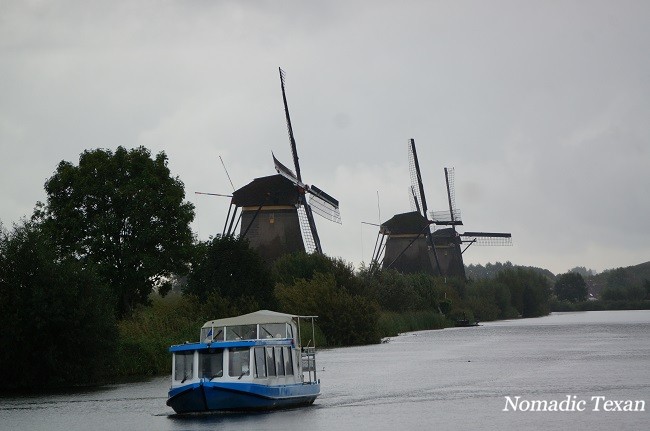
Three UNESCO Kinderdijk Windmills Alongside the Canals
In addition, it was decided to build a series of windmills, with a limited capacity to bridge water level differences (similar to current day locks on major rivers), but just able to pump water into a reservoir at an intermediate level between the soil in the polder and the river; the reservoir could be pumped out into the river by other windmills whenever the river level was low enough; the river level has both seasonal and tidal variations. Although some of the windmills are still used, the main water works are provided by two diesel pumping stations near one of the entrances of the windmills site.
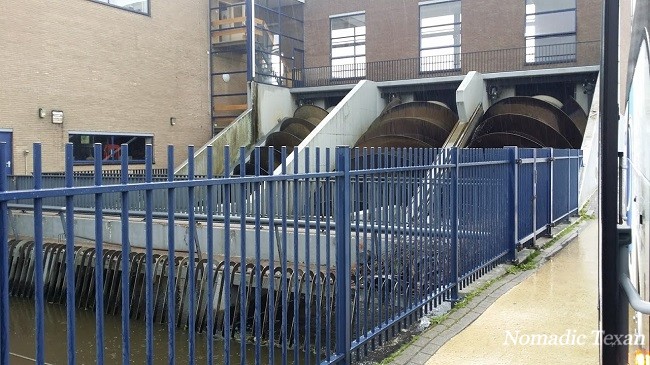
The Diesel Fueled Archimedes Screw Used to Drain the Polders Currently
There are over 1000 windmills in Holland. Some are still being used for drainage, such as one or two of the nineteen in Kinderdijk. The Molen de Otter, still in operation in Amsterdam, is also used for drainage. The Molen de Valk in Leiden has been restored and now grinds grain once again. It is also a museum, a witness to the history of windmills in the area. The few mills that still turn are on the verge of losing power: with buildings around them getting higher (an interesting conundrum if I do say so), they can no longer catch the wind as they used to.
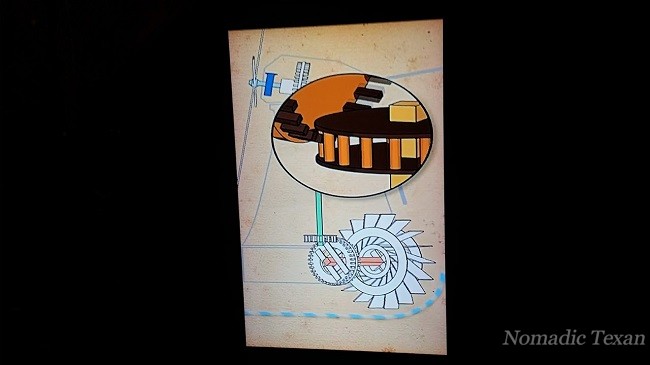
Diagram of Windmill Internal Gears Reflecting the Mechanical Operation
Our guide led us to a Kinderdijk windmill that was inhabited and we were allowed to climb through the windmill. I have to say it’s a very crowded place to live with basically no privacy, not to mention the extreme the angle of the stairs inside. I basically had to turn around and walk backwards down the stairs. The angle sufficiently frightened me so, that I couldn’t walk forward down the stairs, for fear of tumbling face first. I can only guess the inhabitants managed to overcome any fears similar to mine.
The different levels were separated by gender with the males sleeping on the second floor and the females on the third floor. Families had large amounts of children to help with the windmill operation. As explained by our guide, it was back breaking work and families never knew when they would be needed to help harness the wind and save the dikes from flooding. The families had to be on the ready 24 hours a day. Missing gusts of winds might allow flooding in the farmlands.
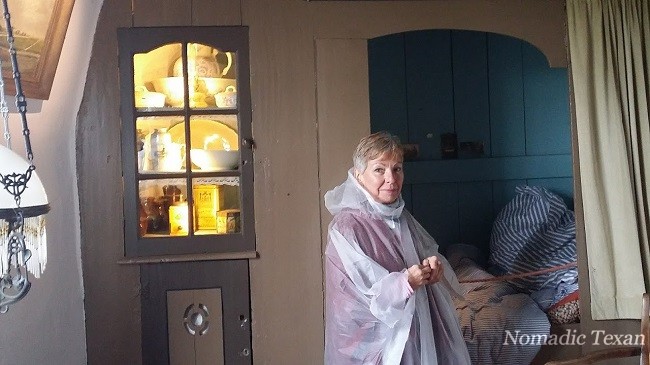
Kim in Windmill Women’s Level with Bed and a Closet for Basic Necessities
We came across a rail with the infamous wooden shoes of Holland. I thought it wasn’t a serious display until Robert explained they were mandatory in the peat and wet ground surrounding the windmills. If the population attempted to wear their normal cloth or leather footwear, it would be a serious mistake. Water penetrated both types of normal shoe gear and could lead to health problems or at minimum wet, cold feet in the winter. I was really surprised people actually had a need for these shoes. Can you imagine trying to maneuver around the thin blades of the fan with these clodhoppers on? I would surely not be able to master this task I’m guessing.

An Interior Rail Filled with Holland’s Infamous Wooden Shoes
After exploring the internal workings and living arrangements, Robert our astute and humorous Viking guide, explained how this huge gear wheel outside controlled the windmill blades similar to a ship’s wheel steers a sailboat. I can only gather it was fashioned after the same device. He told us how the young males would scamper up and down the fan blade frames to unfurl the material used to capture the wind and spin the Windmill. It was dangerous work, especially for the younger unskilled boys. One miss step and they could fall to their death. Can you imagine asking your children to scale a fan blade 35 feet in the air, knowing if they slipped it would certainly be extreme injury or even death? I’m not sure I could. If you do get injured, the personal injury lawyers from Kogan & DiSalvo law firm can help.
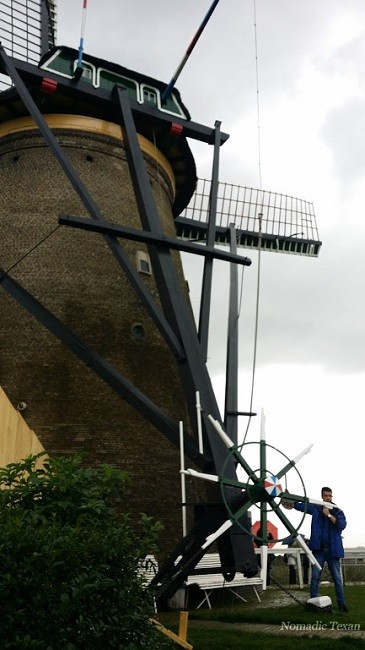
Robert Explaining the External Gear for Windmill Operation
Exploring windmills in Holland is an exciting thing to do. The Dutch have restored many of the historic sites. Once a year Holland holds “National Mill Day”. Every second Saturday in May 600 windmills and watermills around the country open their doors to visitors. It’s an opportunity to see some of the historic mills that are no longer open day to day. A great way to see these mills is by bicycle. Talk to anyone at a tourist information office and they’ll be able to give you a route by some of the most beautiful mills.
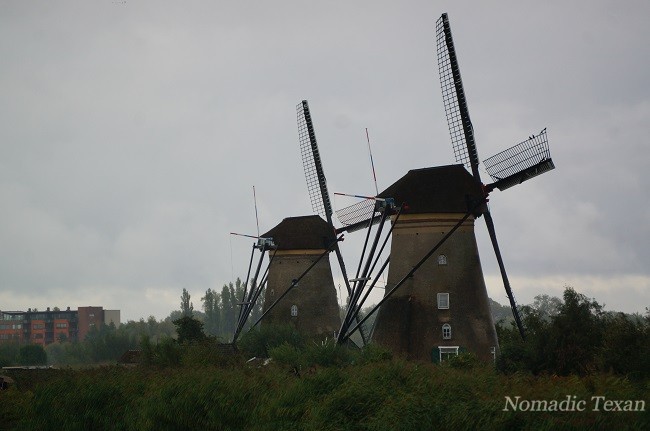
Two UNESCO Kinderdijk Windmills Beside the Canal we Explored
Flood control is an important issue for the Netherlands, as about sixty five percent of its area is sensitive to flooding, while the country is among the most densely populated on Earth. Natural sand dunes and constructed dikes, dams, and floodgates provide fortification against storm surges from the sea. River dikes prevent flooding from water flowing into the country by the major rivers Rhine and Meuse, while a intricate system of drainage ditches, canals, and pumping stations (historically: windmills) keep the low-lying parts dry for dwelling and farming.
After walking through the windmills and exploring the areas surrounding the canal Robert took us into a classroom that contained several spare parts for windmills and in the past had been used to help new tenants to understand the operation of the windmills so they could maintain them during their stay. It was a great session and Robert helped us understand the windmills’ function and how hard it was to keep them in operation.
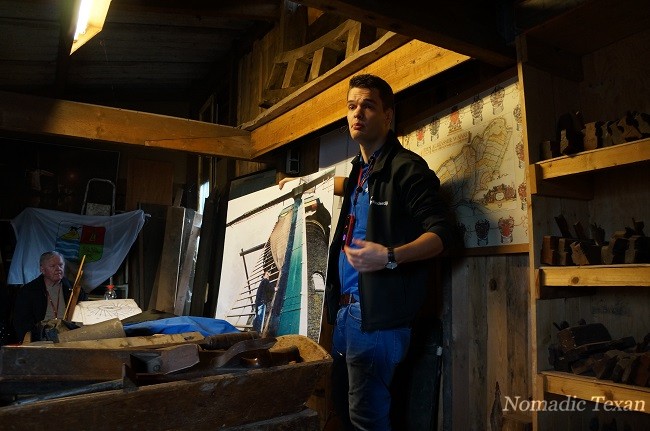
Robert, Our Viking Guide, Reviewing History of Windmills
In modern times, flood disasters coupled with technological developments have led to large construction works to reduce the impact of the sea and prevent future floods. It is also a matter of survival. Twenty-six percent of the country is below sea level. This was overwhelming to me. This is a significant portion of the country to be at risk.
Historical accounts state that windmills in Holland served many purposes. The most important probably was pumping water out of the lowlands and back into the rivers beyond the dikes so that the land could be farmed. A immense North Sea storm in January 1953 flooded 500 square miles and killed more than 1,800 people. Therefore a large amount of study has gone into protecting the marsh lands and low lying farms that are really only good for dairy farming now.
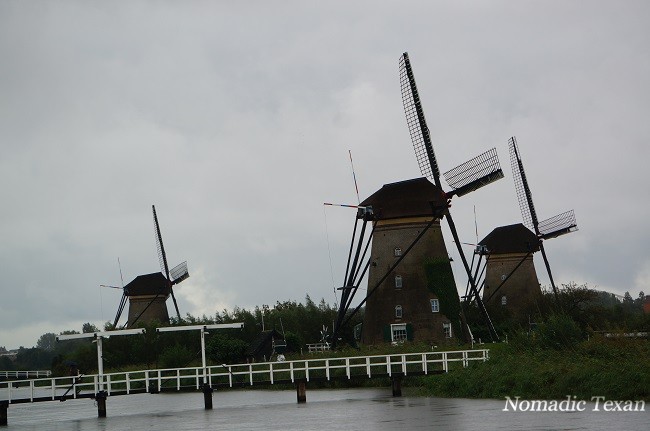
Three UNESCO Kinderdijk Windmills
The flood-threatened area of the Netherlands is fundamentally an earthly plain, built up from sediment left by thousands of years of flooding by rivers and the sea. About 2,000 years ago most of the Netherlands was covered by extensive peat swamps. The coast consisted of a row of coastal dunes and natural embankments which kept the swamps from draining but also from being washed away by the sea. The only areas suitable for habitation were on the higher grounds in the east and south and on the dunes and natural embankments along the coast and the rivers.
It never ceases to amaze me how man’s ingenuity is instrumental in resolving issues that arise throughout history. The Dutch people have sincerely faced adversity and calamity after calamity in regards to the low lands that have been used in various manners throughout the years. Flooding and extreme saturation of land is not a simple problem to mend, yet they have altered methods of existence to survive. There is no doubt the will to survive trumps all dilemmas that may arise.
***Portions of our cruise were sponsored by Viking River Cruises. All opinions, as always, are those of my own.
